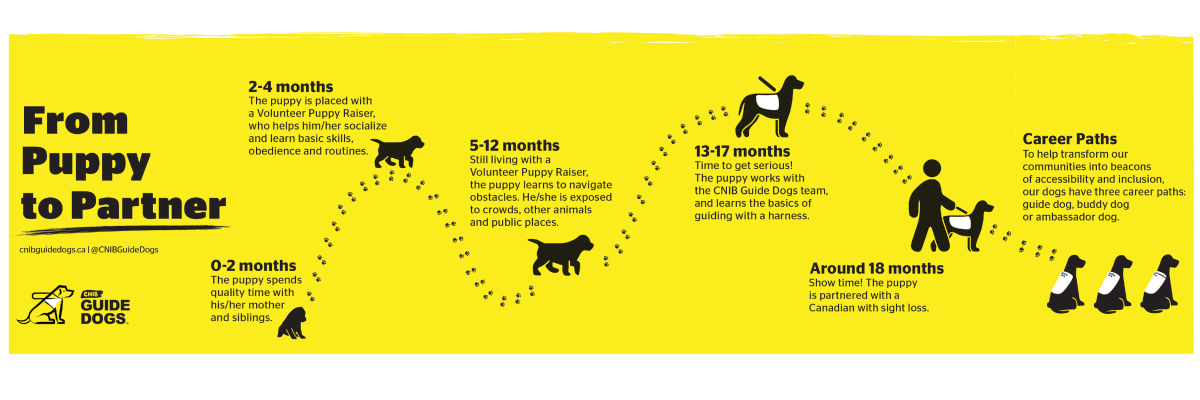The process of becoming a guide dog begins before birth, with animals that are bred to have the physical and behavioural traits that make them best for the work.
Future guide dogs move through an established training process with checks along the way to ensure their appropriate development. It's a team effort involving volunteers, trained staff and guide dog users:
-
0-2 months: Puppies spend their earliest days with their mother and siblings
-
2-4 months: Puppies are placed with carefully selected volunteer puppy raisers. Supported by CNIB Guide Dogs staff, they play a pivotal role in raising and socializing the puppy to become a guide dog. This is the time puppies learn basic skills, obedience commands and feeding routines
-
5-15 months: Puppies continue to live with their volunteer puppy raisers, who will help them to learn to move around safely and negotiate stairs, while exposing them to as many different environments as possible. The puppy's confidence grows.
-
13-17 months: Training starts in earnest as the dog begins to work with a professionally qualified guide dog trainer or guide dog mobility instructor being introduced to the harness and the basics of the guiding role, including working safely with a handler. Regular evaluation will ensure the dog is progressing properly
-
Around 18 months: The guide dog trainer or guide dog mobility instructor starts the most critical part of the job: matching the dog to its guide dog handler ensuring a pairing of the dog's personality and physical attributes and the guide dog handler’s needs
-
The final step: The guide dog meets their new best friend and handler, changing the life of a blind or partially sighted Canadian forever.
